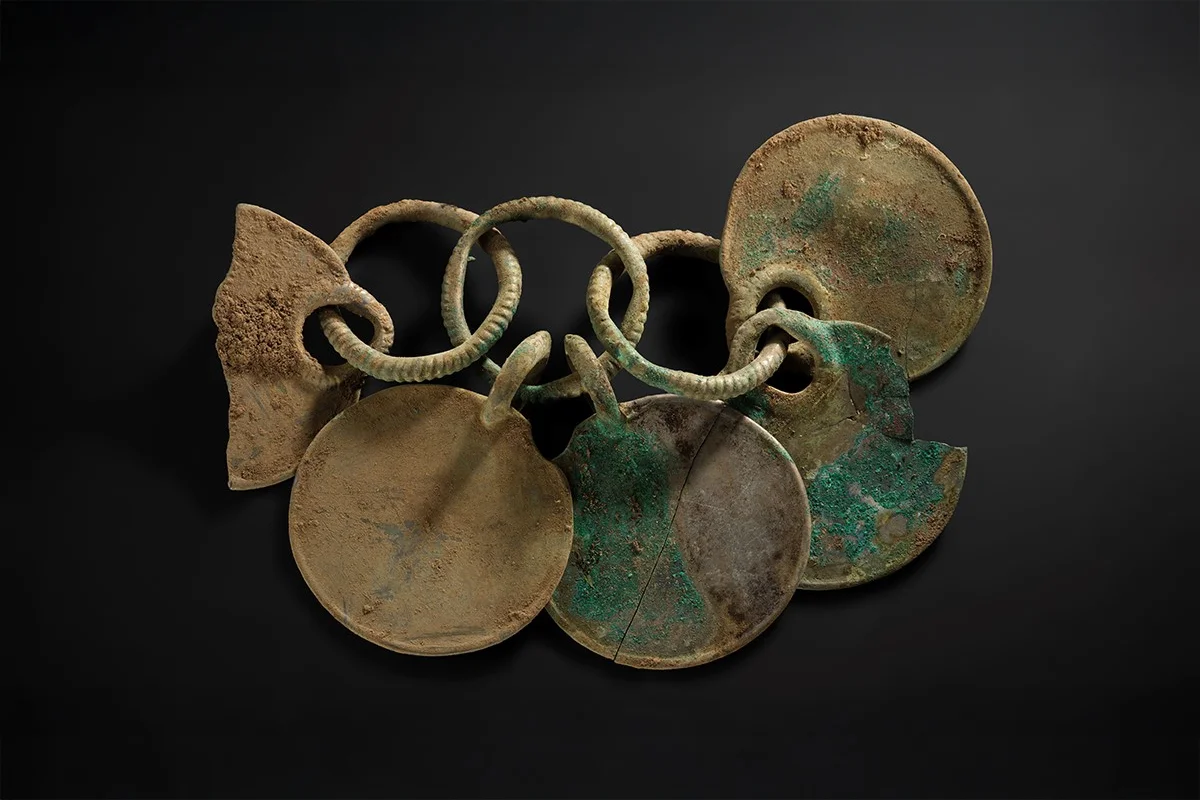A year on from its acquisition by National Museums Scotland, initial conservation work has revealed exceptionally rare silver-coloured objects in one of the most significant hoards ever discovered in Scotland.
Dating to 1000–800 BCE, the Peebles Hoard comprises over 500 unusual bronze and organic objects and components, many without archaeological parallel anywhere in the world.
The defining technological characteristic of the Bronze Age is the widespread use and production of bronze, an alloy of copper and tin that is usually a deep golden colour.
Conservation of the Peebles Hoard has revealed rare silver-coloured objects from an era when silver was unknown. Analysis at the National Museums Collection Centre revealed the colour is the result of high levels of tin on the surface. This is thought to be the product of a deliberate enrichment technique by highly skilled craftspeople.
The hoard was discovered by a metal detectorist in the Scottish Borders in 2020 and allocated to National Museums Scotland through the Treasure Trove legal process in 2024. It was extracted from the ground in a single block and excavated under laboratory conditions at the National Museums Collection Centre in Edinburgh.
The bronze objects emerged encrusted with earth and green copper patina. After months of careful preparatory work to stabilise, assess and document the material in the hoard, conservators are painstakingly removing thousands of years of dirt and corrosion to reveal the spectacular lustre of the original surface. It is estimated that it will take three years to complete the conservation of this exceptional Bronze Age discovery.
Bethan Bryan, Peebles Hoard Conservator at National Museums Scotland, said:
“Working on the conservation of the Peebles Hoard is a rare privilege and definitely a career highpoint. As well as removing dirt and corrosion it is essential that we preserve as much precious organic material as possible for future research. Getting to this point has been a challenging and incredibly time-intensive process, but the moment the silvery surface began to emerge was magical, a secret revealed after 3000 years.”
The use of many of the objects in the hoard is yet to be discovered but it is believed that some may have adorned a horse or wooden vehicle. The tin-enriched decoration would have added to its impact, signifying high status and wealth through exquisite craft.
Efforts to secure funding for the continued research and conservation of the hoard are ongoing.
Dr Matthew Knight, Senior Curator of Prehistory at National Museums Scotland, said:
“The Peebles Hoard is truly a one-of-a-kind discovery, and I have never seen anything like the stunning, silver-coloured finish of these Bronze Age objects. They almost glow.
Thanks to the generous support of our donors we are making significant progress. However, there is more to be done to prevent further deterioration of these fragile objects and continue our research to uncover more of the Hoard’s secrets.”
Conservation of the Peebles Hoard is supported by The Leche Trust, the Pilgrim Trust and a group of private trusts and individual donors.
Header Image Credit : National Museums Scotland
Sources : National Museums Scotland





